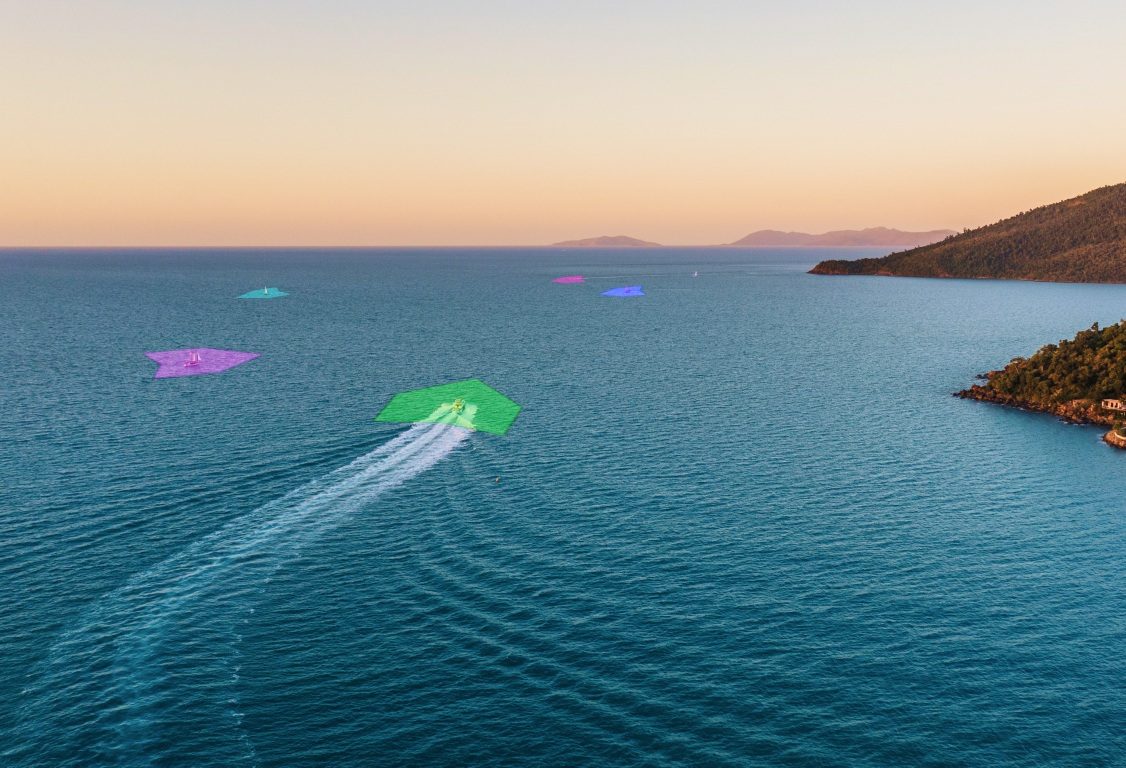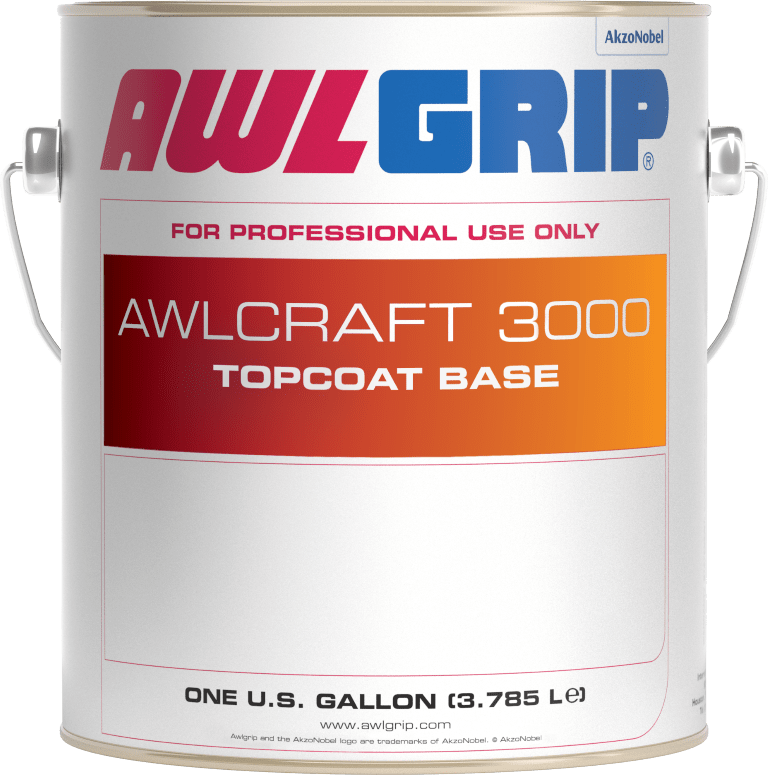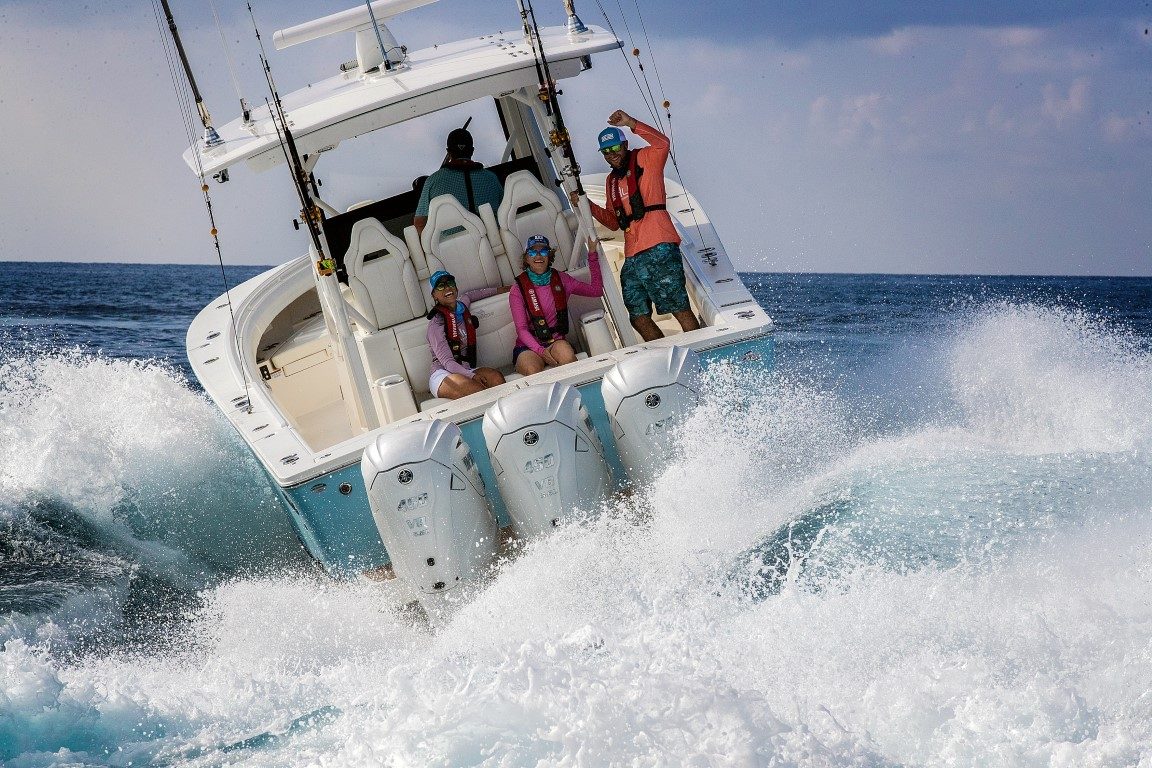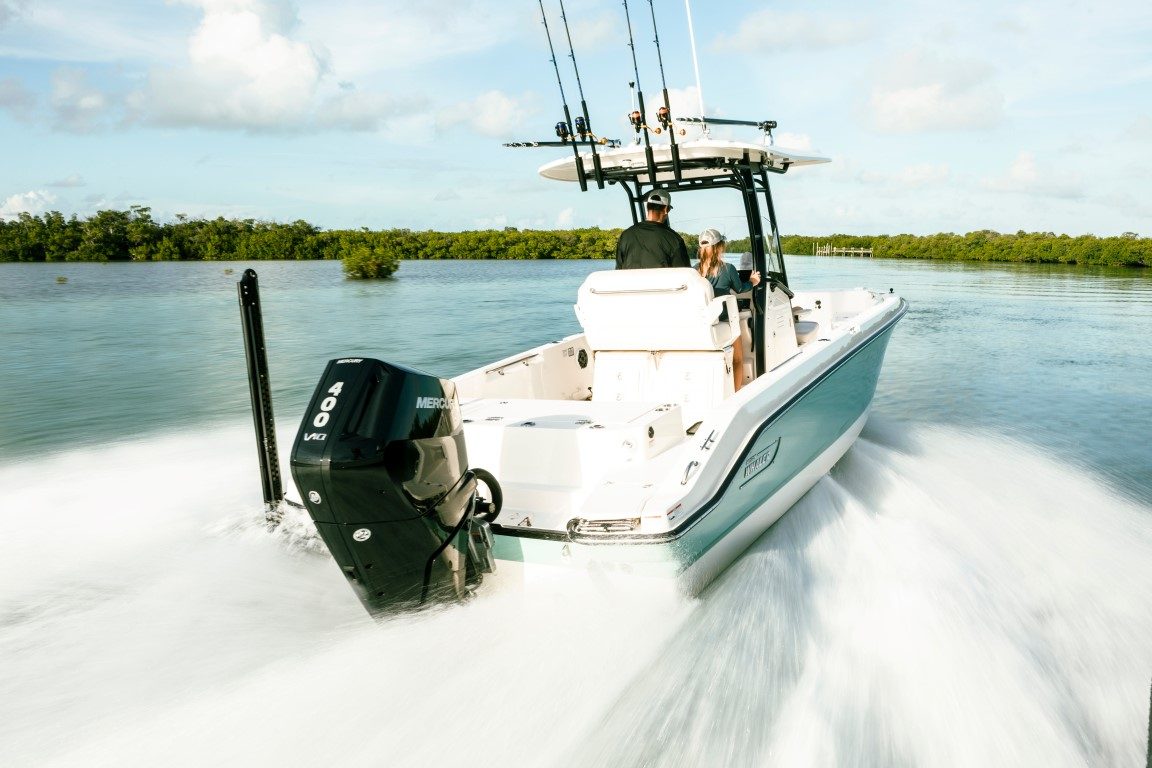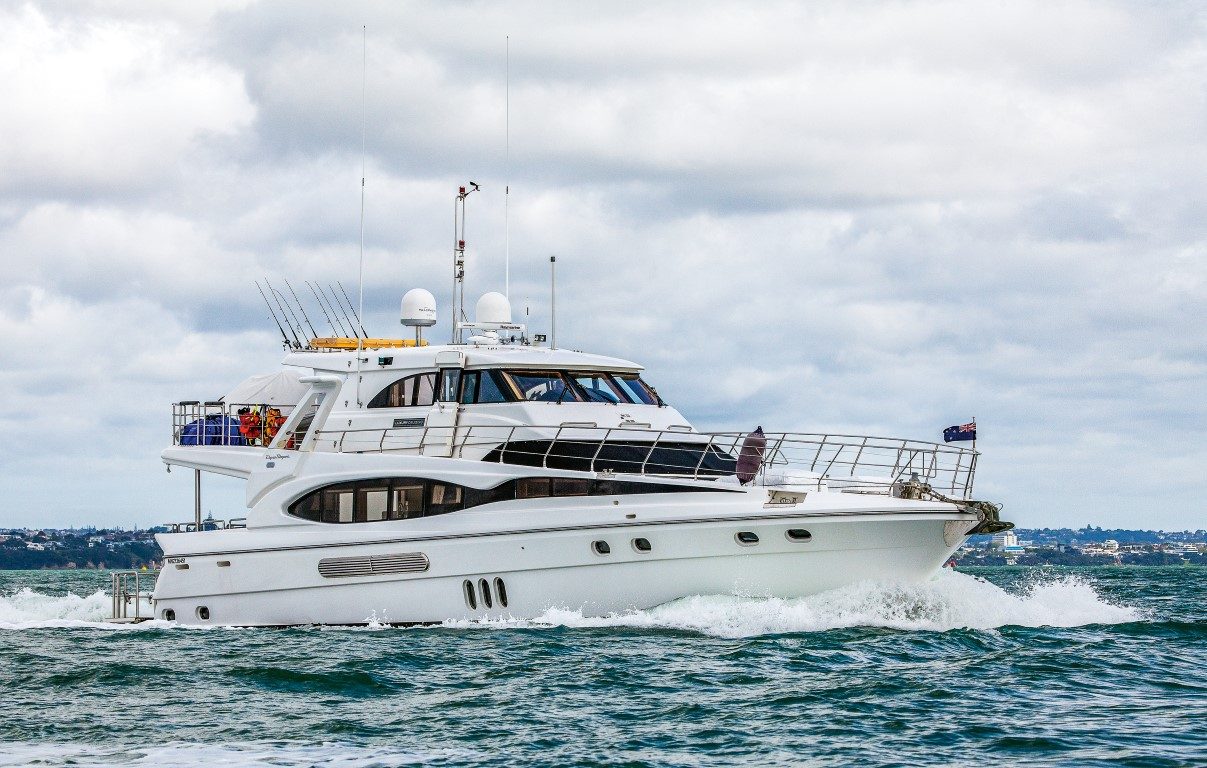

Guests aboard an Auckland-based charter boat are enjoying flatter rides, secure wine glasses and settled tummies this summer thanks to a set of stabilising rotors recently fitted to the vessel’s hull.
Rotor technology used to enhance a boat’s stability sounds kind of counter-intuitive – wouldn’t rotors encourage roll? Well, to understand how this system works you might need to revisit your high-school physics syllabus, but believe me the performance is impressive.
Tawaki is a luxuriously-equipped Dyna Laguna launch built in Taiwan in 2008. She displaces 65 tonnes and at 81ft LOA caters to a range of charter requests – from boutique, 10-day excursions for couples, through corporate cruises for up to 50 guests, to private fishing trips.
Her motion in a beam or head sea is fine, says owner-skipper Steve Cockeram, but with her deep V bow and flat bum Tawaki rolls in a following sea and that sometimes creates a little unease among guests – or more precisely, their tummies.
“I’d long been investigating ways to improve the boat’s stability and, given that we want to take her to Fiji in May next year – having a stabilising system would make for a much nicer ride.”
Though attractive, traditional stabilising systems such as gyros and fins weren’t ideal, says Cockeram. “The boat’s fitted with twin 1500hp V10 MTUs – there’s very little spare space in the engine room. To accommodate those technologies would involve significant surgery – and also eliminate quite a bit of existing equipment, including a generator.”
His research eventually led him to the rotor stabilising system – MagnusMaster – manufactured by the Netherlands’ Dynamic Marine Systems. Though a relatively new technology, it’s already been fitted to some 250 vessels worldwide – mostly to large superyachts and launches. Tawaki is the first New Zealand installation.

The system involves two rotating cylinders – each about 1.5m long and 150mm in diameter – mounted on the hull about midships, either side of the keel. When not is use they are ‘parked’, oriented fore and aft. When deployed they swivel out 90o – at right angles to the direction of travel – about a half a metre under the surface.
Electrically-driven, the rotors spin clockwise and anti-clockwise, changing direction very rapidly in response to the vessel’s role. They function in unison, a bit like ailerons on aircraft wings. For example, when the port cylinder spins backwards it generates ‘lift’ and counters the boat’s roll to port. At the same time the starboard cylinder is spinning forwards to generate a ‘down’ force. Together, they keep the vessel level and stable.
 This might sound like hocus-pocus – but in fact the physics behind it is pretty straightforward and has been around for centuries. A spinning cylinder (or sphere) moving at speed through air or water will generate lift or a down force, depending on the direction of the rotation.
This might sound like hocus-pocus – but in fact the physics behind it is pretty straightforward and has been around for centuries. A spinning cylinder (or sphere) moving at speed through air or water will generate lift or a down force, depending on the direction of the rotation.
The phenomenon is commonly known as the Magnus Effect (named after the 19th century German physicist who discovered it – Heinrich Gustav Magnus). The easiest way to observe it in action is at tennis. Accomplished players impart significant side-, cut- or top-spin to ‘curve’ the ball, and it’s particularly noticeable during serves.
Advantages
Cockeram is delighted with the technology’s performance – “as a fully-electric system it’s completely silent, guests don’t even know it’s there” – and says much of its appeal lay in the ease and speed of installation – particularly for a retrofit scenario.
“The first bonus is the flexibility of location – unlike the other systems I explored which needed to be located in a fairly specific area for optimum performance, these rotors can be mounted pretty much anywhere under the hull. So we could work around the engine room’s existing set-up. No need to shift or remove anything.
“Second, the rotors’ footprint inside the engine room is tiny – only the mounting hubs protrude into the engine room – the main body of each rotor is under the boat.”
Other features which ticked the boxes include the fact that the system is entirely electric. “Most of the other systems I explored have a substantial hydraulic component requiring new engine take-offs, long hydraulic hoses, pumps and oil reservoirs. I wasn’t too keen on that – it complicates the installation – and frankly we didn’t have the space to accommodate those additional bits.

“As it happens, Tawaki has an excess of energy available so an all-electric solution made perfect sense. She produces 35kW of electrical power from her two generators – 11kVa and 22kVa – and at least one runs permanently. This boat was built for charter in the Whitsundays and has 10 air-conditioning units, but we hardly ever use them in New Zealand – I use the surplus power for the stabilisers.”
Installation
It was tackled by Vessel Management Services Ltd based at Hobsonville Marina. The most difficult part of the project was cutting the 280mm holes through the fibreglass hull. “Reinforcing the two mounting areas with Chockfast was relatively easy,” says Cockeram, “but we had to use lasers to ensure the holes were perfectly perpendicular. We used a lathe cutter.”
Each assembly weighs 300kg, though each carbon-fibre cylinder only weighs 2.5kg.
Interfacing it all into the boat’s existing electronics was straightforward thanks to the rotor technology’s CANbus architecture and ethernet connectors. It communicates seamlessly with the vessel’s Raymarine 120e MFDs and is controlled from a small panel mounted at the helm.
Performance
We were treated to a demonstration of the technology on Auckland’s Hauraki Gulf, and can confirm that it works pretty darn well.
The best way to experience it is during sharp turns. With the rotors parked the vessel leans outwards noticeably. With the rotors deployed she remains perfectly level (see video). Perhaps the most impressive part of the technology is the speed of the response – as electrically-driven units the rotors change spin-direction instantaneously – alternately producing ‘lift’ and ‘down force’ to counter rolls.
What about drag? “Not an issue,” says Cockeram. “We tend to cruise at around 10–12 knots – displacement speed – and I can honestly say I’ve not noticed any difference in speed, revs or fuel burn. The direction of the tide has a far greater impact on the hull’s efficiency.” When they’re parked the rotors lie along the fore-aft line, nestled behind a housing that looks a bit like a whale’s head – it has a hydrodynamic prolife to reduce drag.
Auckland’s NZ Marine Stabilisers is the local agent for the rotor stabilisers and managing director Sam Harris says the technology is suitable for launches and yachts up to 30m LOA, at speeds between 3 and 12 knots.

“A major advantage of the rotor system over a conventional fin-driven system is roll damping at lower speeds. Fins need significant speed through the water to achieve effective roll damping – partly because they are relatively small. They’re designed to be as small as possible to reduce the risk of damage.”
He points out that the rotor assembly is a one-size unit – fewer/more units are installed depending on the size of vessel. Small boats use only one, whereas four units might be installed on bigger vessels. And because of the location flexibility, where the unit(s) is mounted is not critical. Many smaller vessels mount one near the transom.
He also stresses that the rotors don’t work in an anchorage, when the vessel is at rest. “To work the Magnus Effect needs the rotors to be moving through the water.”
While Tawaki’s system is wired directly to her generators, it seems many installations in Europe run the rotors off their inverters.
Magnus Master specifications
Maximum power: 1500 watts per rotor
Average consumption: 1000 watts per rotor
Voltage: 230V single phase AC
For more information contact NZ Marine Stablilsisers at 0274 473 418 or email nzmarinestabilisers@gmail.com



